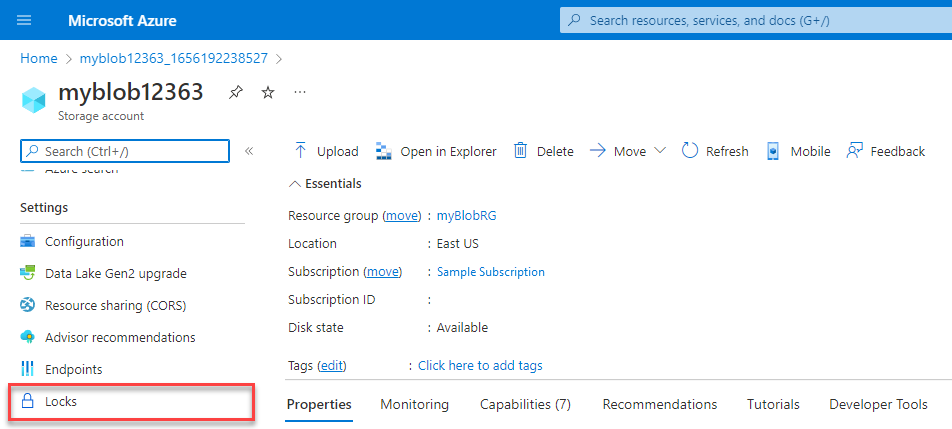Describe the purpose of resource locks
A resource lock prevents resources from being accidentally deleted or changed.
Even with Azure role-based access control (Azure RBAC) policies in place, there's still a risk that people with the right level of access could delete critical cloud resources. Resource locks prevent resources from being deleted or updated, depending on the type of lock. Resource locks can be applied to individual resources, resource groups, or even an entire subscription. Resource locks are inherited, meaning that if you place a resource lock on a resource group, all of the resources within the resource group will also have the resource lock applied.
Types of Resource Locks
There are two types of resource locks, one that prevents users from deleting and one that prevents users from changing or deleting a resource.
- Delete means authorized users can still read and modify a resource, but they can't delete the resource.
- ReadOnly means authorized users can read a resource, but they can't delete or update the resource. Applying this lock is similar to restricting all authorized users to the permissions granted by the Reader role.
How do I manage resource locks?
You can manage resource locks from the Azure portal, PowerShell, the Azure CLI, or from an Azure Resource Manager template.
To view, add, or delete locks in the Azure portal, go to the Settings section of any resource's Settings pane in the Azure portal.

How do I delete or change a locked resource?
Although locking helps prevent accidental changes, you can still make changes by following a two-step process.
To modify a locked resource, you must first remove the lock. After you remove the lock, you can apply any action you have permissions to perform. Resource locks apply regardless of RBAC permissions. Even if you're an owner of the resource, you must still remove the lock before you can perform the blocked activity.